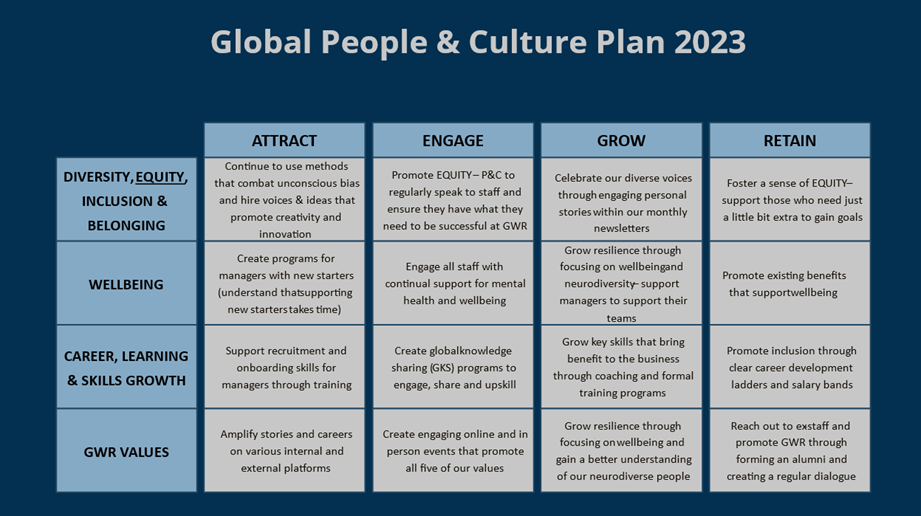-
Provided by

- Date published: Nov 20, 2023
- Categories
30-second summary
- Guinness World Records is transforming its DEIB program through an attract, engage, grow, retain model
- Training and input from diversity leaders and external groups have driven huge improvements in diversity, inclusion, equity, and belonging practices, leading to an 86% DEIB score
- Guinness World Records have tackled issues including pay equity and unconscious bias
Ex-Royal Marine, Sam Hammond, broke the world record for the fastest time completing a half marathon with a 26kg refrigerator strapped to his back. Kami Rita Sherpa and Lhakpa Sherpa hold the record for the most ascents of Mount Everest. These record-breakers prove that people are capable of amazing things given the opportunity. Guinness World Records (GWR) states that its purpose is “to make the world a more interesting, fun, and positive place.” This ethos has influenced Global People & Culture Director Stephanie Lunn to run its HR program using a people and culture model centered on DEIB.
“It’s about creating an environment globally that truly fosters inclusion and belonging,” Lunn explains. “Because a rich culture of different types of voices is always going to mean that you have more creativity, more ideas, more fun.”
Challenge: Identifying the DEIB blind spots
HR professionals are fighting an uphill battle in pursuit of improving equity and inclusion, which is often due to stubbornness, lack of education, and limited budget. Moreover, even the most supportive team requires a structured plan of action balancing internal changes with external input, from hiring to learning.
GWR’s DEIB strategy has humble beginnings, shares Lunn. “At the beginning of 2020, when we were in the office, I said to the team, ‘I’d like to start some training on diversity and inclusion.’” The program is now at the heart of its people and culture plan and is one of the four crucial pillars by which GWR aims to attract, engage, grow, and retain its employees.

It is a testament to Guinness World Record’s progress that the most recent surveys – that GWR conducts three times per year – yielded an 86% DEIB score. But what steps has GWR taken to move its DEIB strategy from a one-off internal exercise to and comprehensive strategy that includes embracing external benchmarking, eliminating unconscious bias, and establishing pay equity?
External DEIB benchmarking and support
GWR has made it their mission to work with allies and create partnerships to understand the diverse people they serve. “One of the people who came and spoke was a lady called Chikere Igbokwe. She does diversity and inclusion training … and she helped us on this whole journey.”
The aim here is to identify blind spots in their understanding of certain communities. The GWR team doesn’t presume to know what those communities need to thrive in the workplace. This has led GWR to work with many different groups, including LGBTQIA+ charity Stonewall, which helped influence their family leave policy, Lila Boyce, who coaches them on neurodiversity, as well as Mencap, a disabled persons advocacy group. Education from external voices has been beneficial for GWR employees.
“I think people hear all this terminology ‘micro-aggression’, ‘inclusiveness’, but they’re always too frightened to ask, and they’re too frightened to get things wrong,” explains Lunn.
When people don’t understand something often what they do is “they just don’t say anything at all. And we’ve got to own it and own up to it,” says Lunn. To create this dialogue, GWR invites members of staff, record holders, and diversity speakers to hold fireside chats where different communities share stories and ask questions to encourage open discourse.
As part of this initiative, GWR also encourages groups within the business, such as True Colors, which supports LGBTQIA+ employees, and there is also a huge focus on mental health support. GWR observes Mental Health May, provides employees free access to the Headspace app, and offers an open-door policy to discuss any issues that might be affecting them. The People & Culture team is also diligent with holding 1-2-1s with staff to ensure they are feeling supported.
Addressing unconscious bias in hiring processes
Unfortunately, as much as we like to believe we are unbiased, 96% of recruiters still think unconscious bias plays a big role in deciding who gets the job. GWR is working hard to mitigate this issue, “I did this little pilot of blind recruitment, which is redacting CVs completely,” explains Lunn.
“You can’t just redact a name or an address … the university … the names of companies that people worked for.” Not everyone, particularly neurodivergent people, interviews ‘well’, despite having the right work skills. To combat this, GWR vets candidates differently. “We test people, there are blind CVs, there’s a test, and the P&C first interview is also with the camera turned off, and the name removed,” says Lunn.
However, even when the best candidate wins, a history of bias can follow them into their new role. A common practice has been using a candidate’s previous salary as a benchmark for their new salary, which plays a major role in exacerbating the gender and race pay gap. Although the US has taken steps to eradicate this practice it is still pervasive. To avoid this, GWR introduced pay bands, which set all staff with the same skills and seniority at the same pay rate.
“We could always do more.”
Despite their tireless efforts, Lunn and her team refuse to become complacent in their mission to ensure GWR remains a highly diverse and supportive workplace.
Going into 2024 they aim to roll out their Adjudicator Engagement Project, which addresses the diversity of their adjudicators who “are the voice and face of our brand and deserve our focus and gratitude,” says Lunn. The team is also eager to work with the Creative Mentor Program, which helps kids from lower socio-economic backgrounds enter the creative industry.








